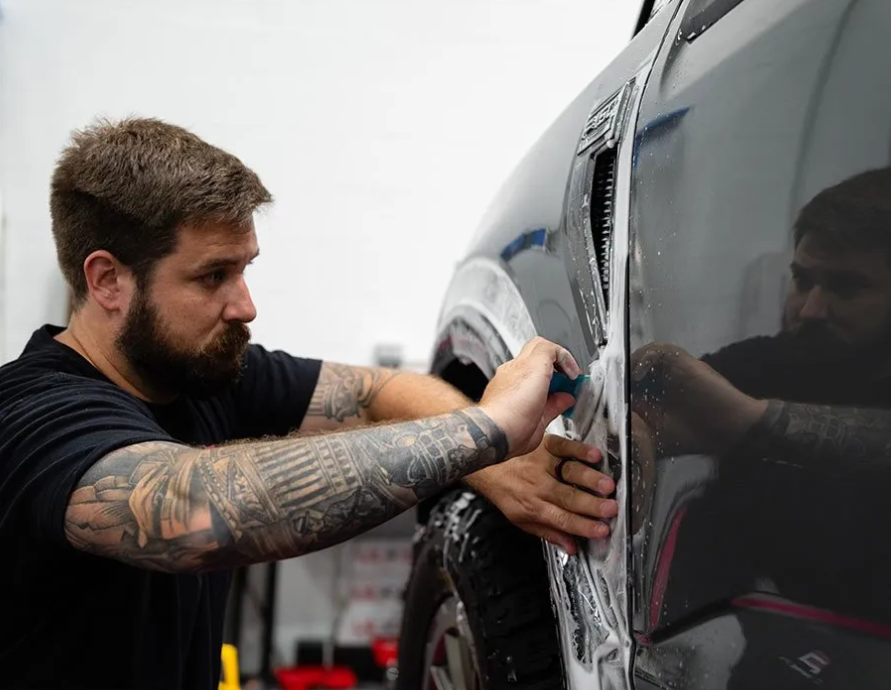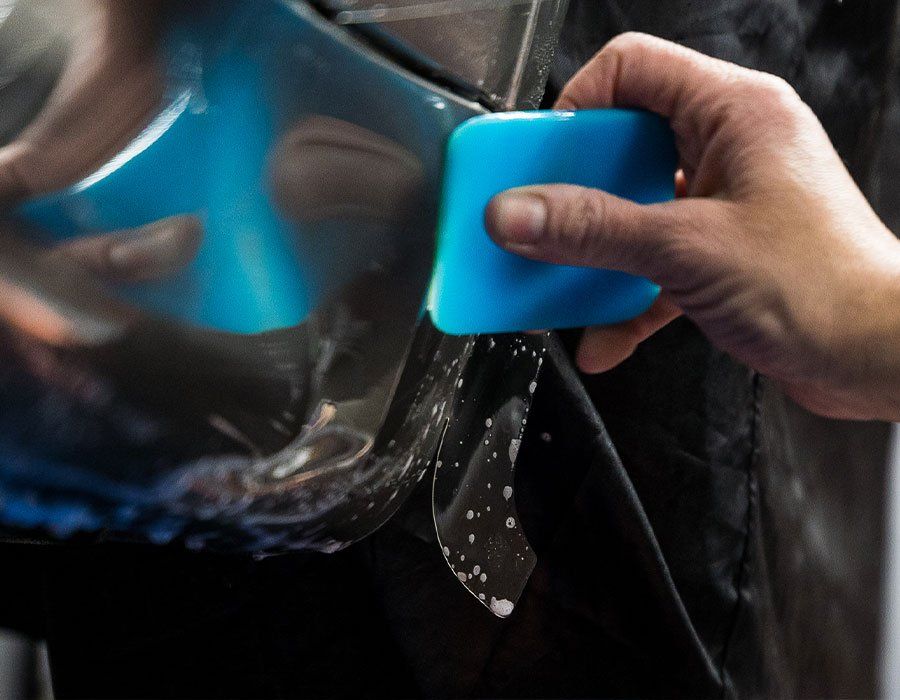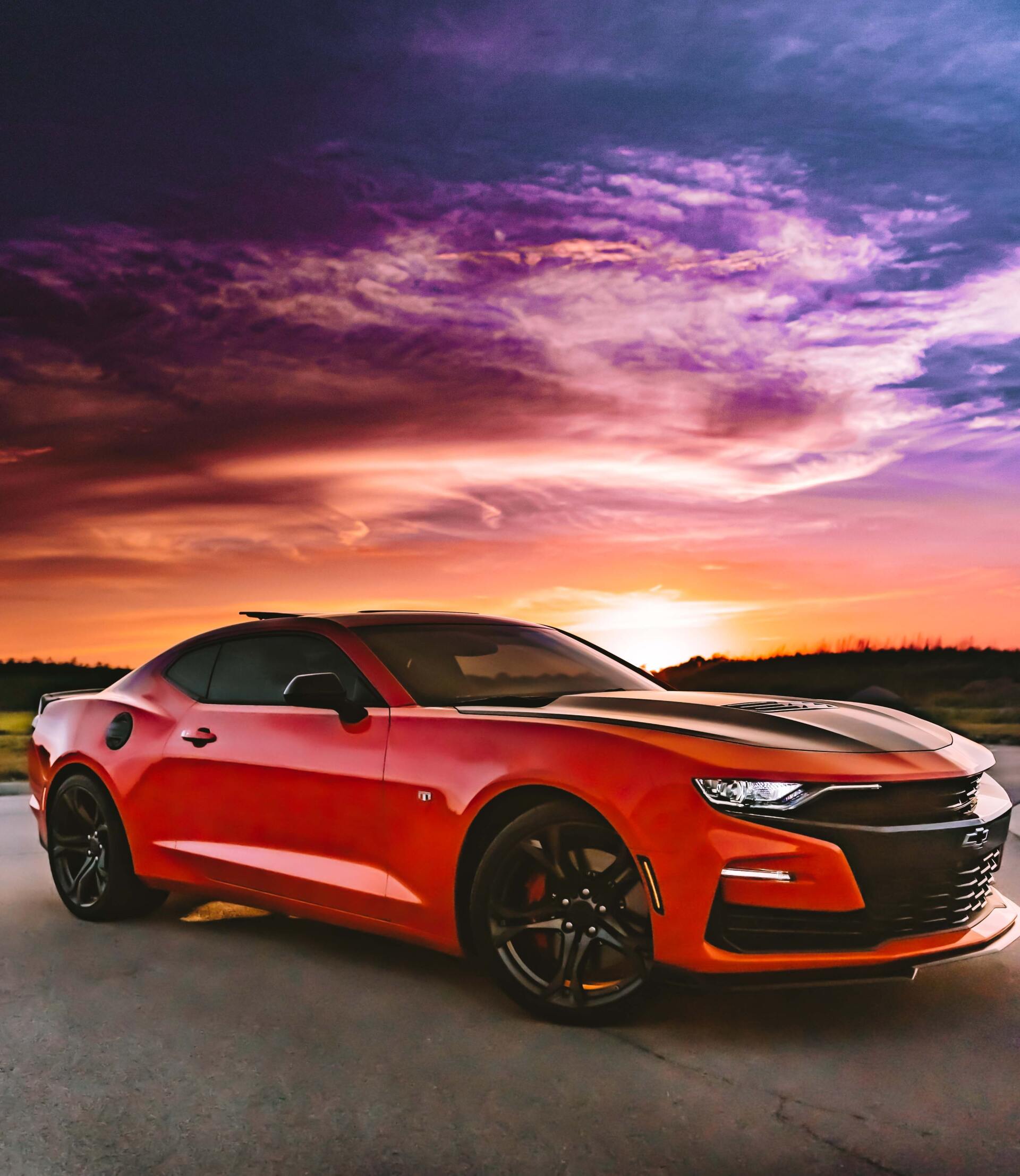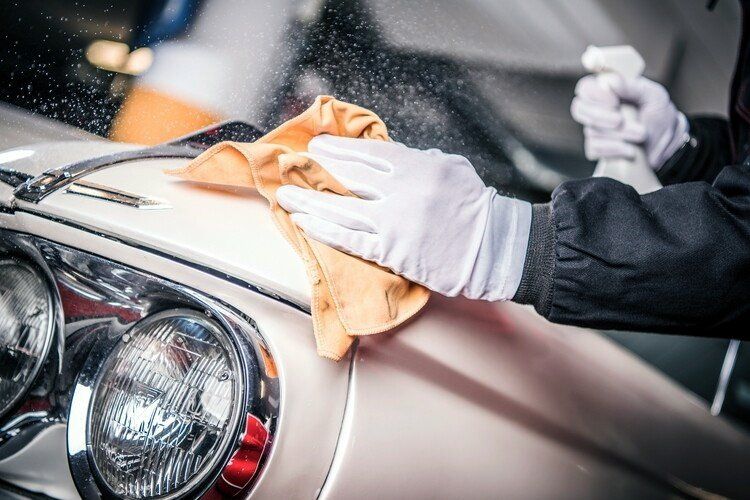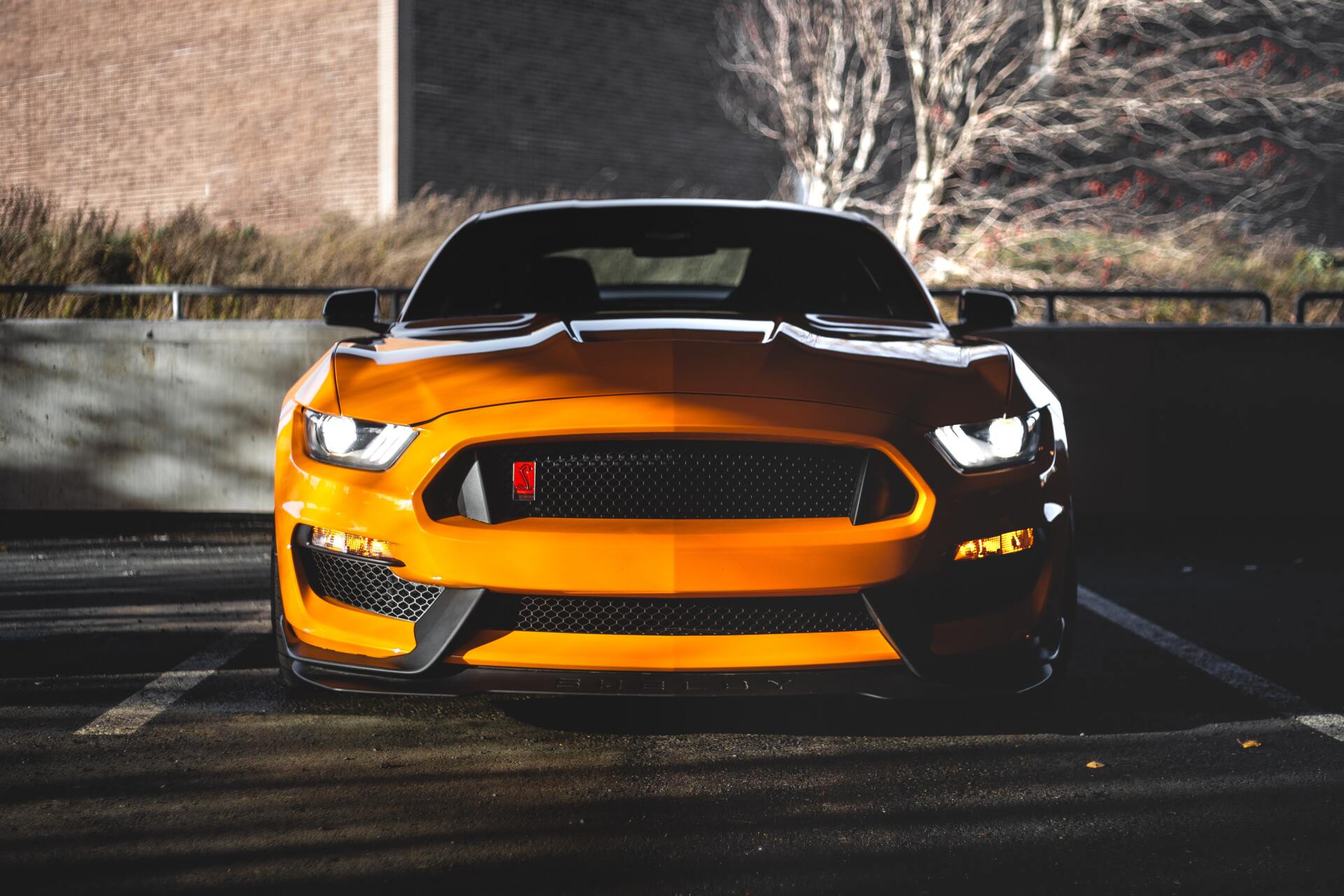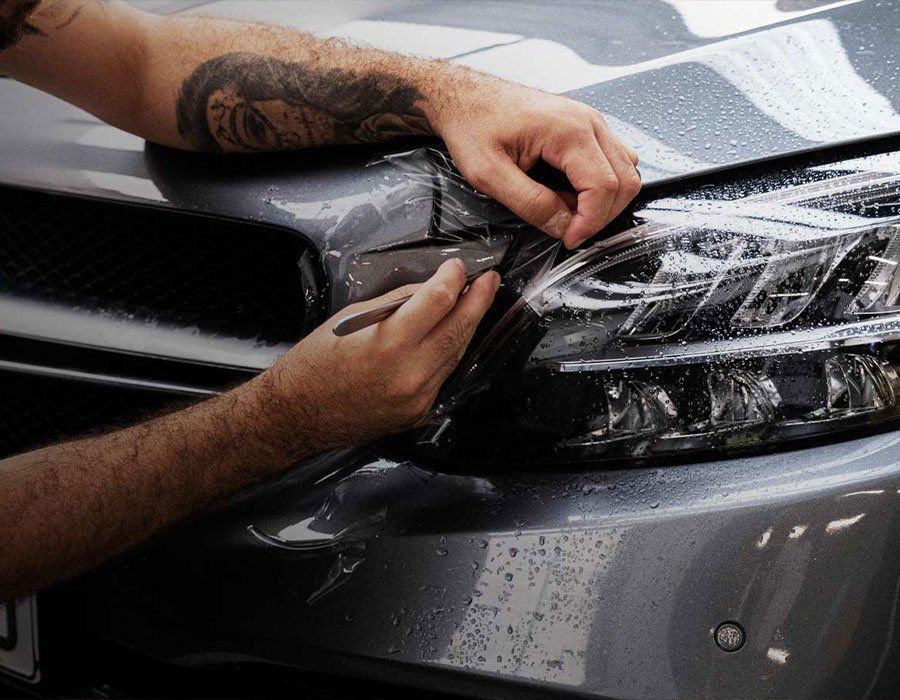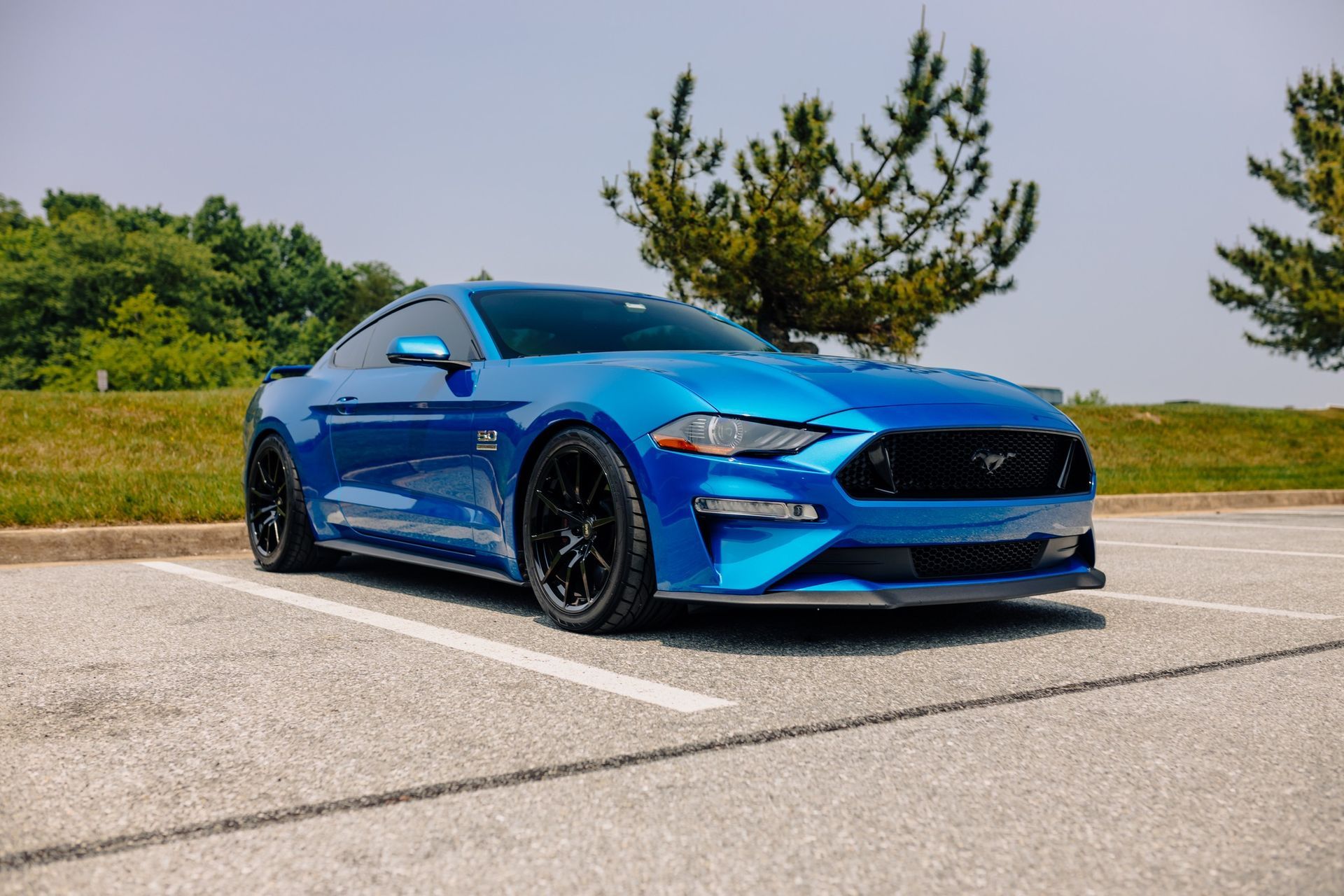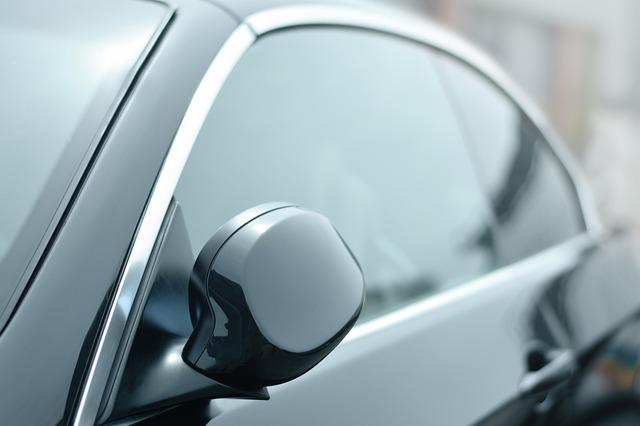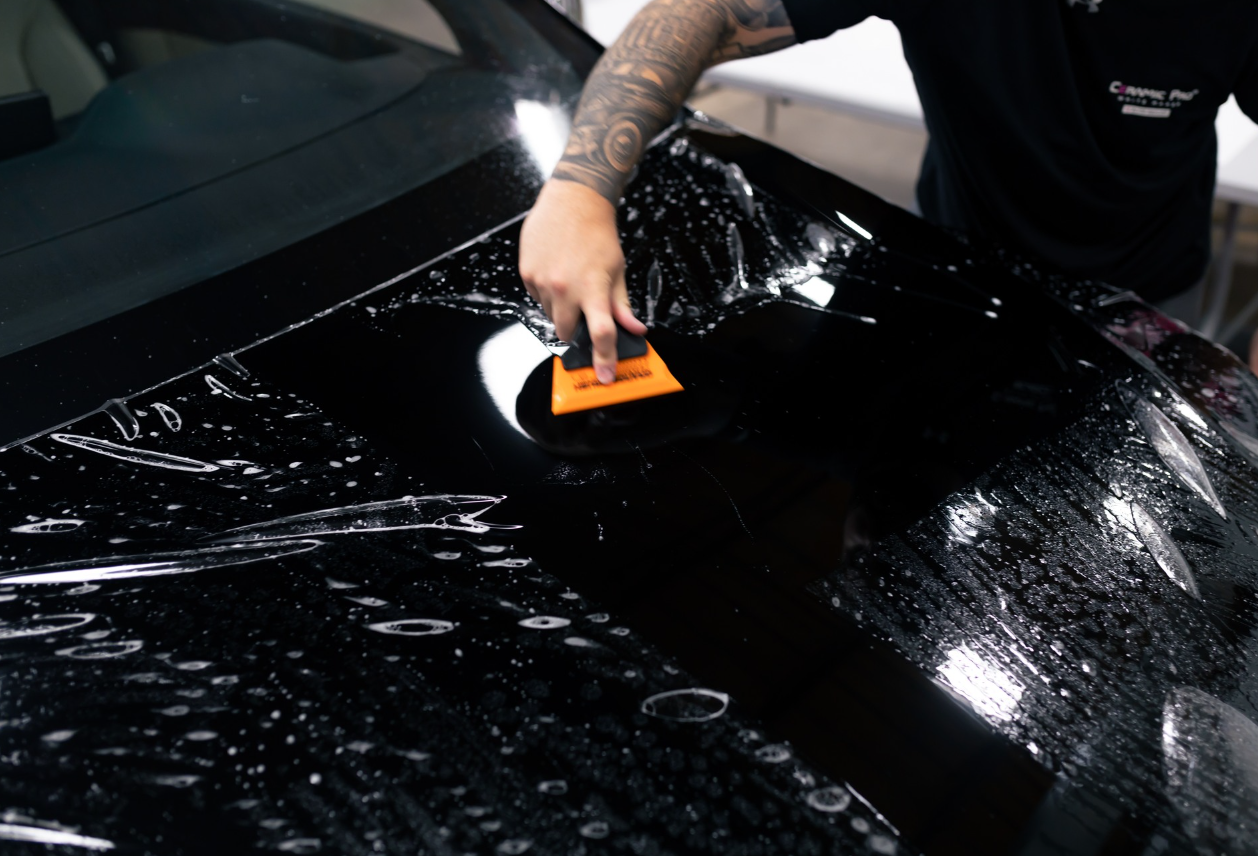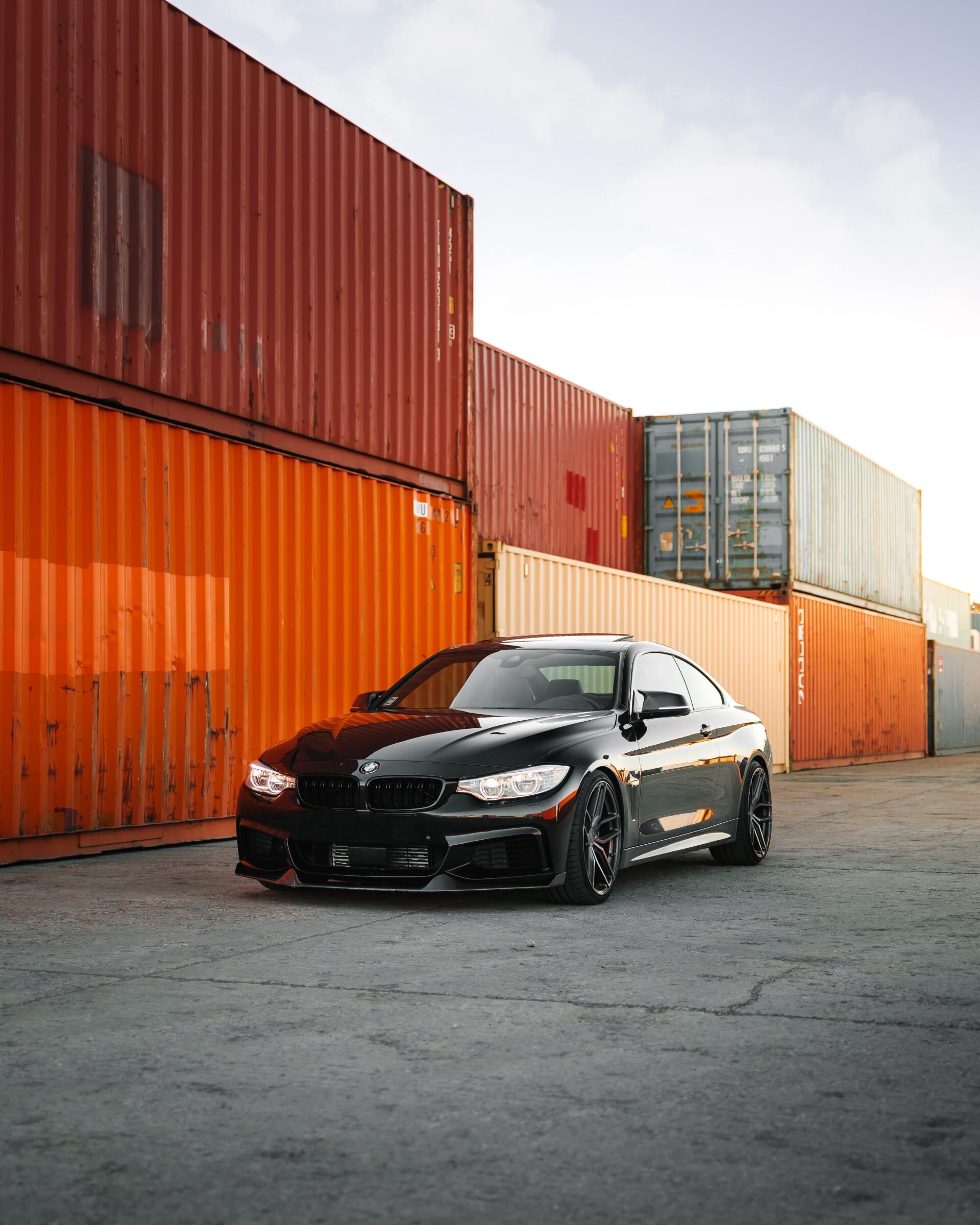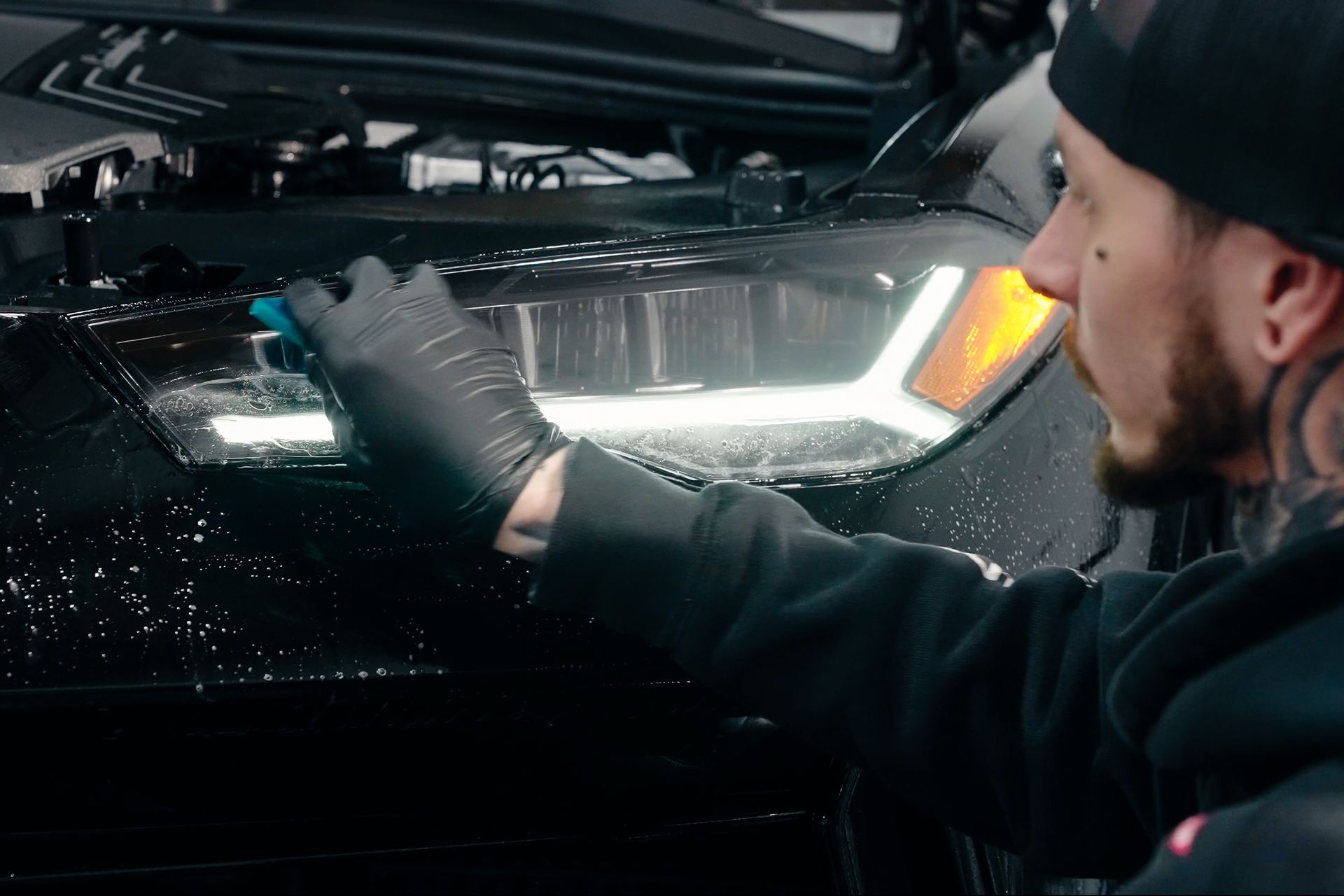DIY Installation of PPF on Your Tesla: Is It Worth It?
Installing a Paint Protection Film (PPF) on your Tesla can be quite rewarding. This DIY project could save you some cash and give you control over the quality of work put into protecting your vehicle. However, it requires patience and precision; from cutting the film to getting those last pesky bubbles out, it might bring some unexpected challenges. The satisfaction of a job well done, though, makes all hands-on tasks worthwhile. Before diving in, let's talk about what PPF really is.
Engaging in a DIY installation of paint protection film on your Tesla can be a cost-effective option for those with the necessary skills and patience. However, proper preparation, meticulous application, and attention to detail are essential to ensuring a seamless result. If you are confident in your abilities and willing to invest the time, it can be worth it. Nevertheless, seeking professional expertise might be preferable for those concerned about potential challenges or desiring an expert finish.
Origin and Purpose of PPF
The history of Paint Protection Film (PPF) is fascinating. Initially, it was developed for military use in the 1960s to protect helicopter rotor blades from the harsh conditions of combat operations, aiming to shield the rotor blades from debris and abrasion during intense situations.
Expanding on this concept, in the late 1990s, PPF made its debut in the commercial automotive industry, with high-end sports cars and luxury vehicles being its first adopters. These vehicles required the utmost protection for their pristine paint jobs, propelling PPF to become a reliable method for shielding vehicle paint from rock chips, scratches, and environmental damage.
Now, why is it such a big deal? Well, imagine your car's exterior as a suit of armor—PPF acts as an additional layer of defense. It serves as an invisible shield against all the battles vehicles face on roads – rocks catapulted by tires, squashed bugs, stray debris, and more.
Just like how a knight needs armor to fend off attacks in battle, vehicles need PPF to fend off damage on the road. It's designed to be nearly invisible when correctly applied, effectively preserving the original aesthetics of the vehicle's paint. Unlike traditional car bras or bulky covers that obstruct the sleek look of a car, PPF doesn't compromise on style while providing top-notch protection.
In today's world, where we often invest heavily in our vehicles, whether for function or luxury, adding a layer of PPF isn't just about preserving the looks; it's about safeguarding your investment. With the wear and tear that our cars experience daily, this special film plays a crucial role in maintaining the long-term value of our beloved automobiles.
Process and Challenges of DIY PPF Installation
The DIY installation of Paint Protection Film (PPF) might seem like a cost-effective alternative to professional installation, but it comes with its fair share of complexities, requiring precision, time, and patience.
The initial step involves thoroughly cleaning the car’s exterior to eliminate any dirt, grease, or wax that might interfere with the film’s adhesion. This is a crucial step as any residual contaminants can compromise the effectiveness of the PPF once it’s applied.
Next, cutting the film demands accuracy and attention to detail. Whether using a pre-cut PPF kit or working from a bulk roll, carefully measuring and cutting the film to perfectly fit each specific area of the car is paramount for a successful installation.
Then comes the application process—arguably one of the most intricate steps in the whole process. Using a squeegee and a water-soap solution, meticulously applying and aligning the film to ensure it adheres smoothly to the car’s surface is imperative. Any misalignment or bubbles at this stage may result in an unsatisfactory finish.
Achieving a seamless, bubble-free installation not only demands meticulous precision but also an abundance of patience. It's like putting together a complex puzzle with no room for error.
Furthermore, external environmental factors such as dust, wind, and humidity can greatly affect the installation process and lead to imperfections in the film. The presence of airborne particles during installation can create flaws that are difficult to rectify once the film has been applied.
Trimming and heat shaping come next; trimming excess film and carefully using a heat gun to mold the film around edges and curves is another skill that takes time and practice to perfect.
It's important to note that DIY PPF installation comes with a steep learning curve. It demands meticulous precision and patience, and any mistakes made during application can be costly. This learning curve often dissuades many car owners seeking protection for their vehicles from opting for the DIY route due to concerns over potential errors.
Precision is vital at every stage of DIY installation; any lapse in concentration during trimming, shaping, or positioning can result in visible imperfections or even damage to the vehicle’s paintwork.
Moreover, working outside or in an uncontrolled environment increases the likelihood of encountering environmental challenges that can compromise the quality of the film application. Balancing these obstacles while maintaining focus on achieving flawless results poses significant challenges for those undertaking DIY installations.
In essence, while DIY PPF installation can certainly provide cost savings compared to professional services, it involves confronting a diverse set of challenges—ranging from managing environmental factors to acquiring intricate skills—that demand careful consideration before embarking on this journey.
Financial Aspects of DIY PPF Installation
So, you're thinking about installing Paint Protection Film (PPF) on your Tesla Model Y all by yourself. First off, it sounds like an adventure. But before we get too deep into this DIY project, we should consider the financial side of things. If we're honest, nobody wants to waste money, and everybody wants a good deal.
The cost of a DIY PPF installation can range from $200 to $800 for a full car kit. This seems quite affordable compared to the higher costs of professional installation. However, don't forget that there are additional costs beyond the film itself. You'll need specific tools like a squeegee, a heat gun, and cleaning materials. These can add up, especially if you want to ensure you have quality equipment that won't cause problems during the installation process.
Let's say you're going for budget-friendly options but end up with low-quality tools. You might encounter issues such as uneven application or damage to the PPF during installation, which could result in a waste of both time and money.
Now, the initial upfront expenses may seem more manageable compared to hiring professionals, but remember that any errors or botched installation may require you to seek professional correction down the line. That means additional costs that could easily add up and exceed what you would have spent on a professional installation from the start.
Imagine going through the DIY process only to realize something went wrong and your PPF isn't properly protecting your Tesla Model Y. Now you may need to spend even more money to fix it later on.
In essence, while DIY PPF installation gives you a sense of control and potential cost savings in the short term, it's important to weigh this against the risks of rework due to errors and the potential need for professional correction. It’s always crucial to look at the bigger picture when it comes to finances and consider the long-term implications before making a decision.
Maintenance and Longevity of DIY PPF
So, you've meticulously installed Paint Protection Film (PPF) onto your Tesla, ensuring maximum protection for your valuable asset. Nonetheless, the effectiveness of this investment largely depends on how well you maintain it. Let's break down the crucial elements of DIY PPF maintenance and explore the factors that contribute to its longevity.
To start off, regular washing using a mild detergent is essential to keeping your DIY-installed PPF in prime condition. This gentle approach prevents damage to the film while effectively getting rid of dirt, grime, and other contaminants. Abrasive cleaning methods should be avoided at all costs as they can cause premature wear, reducing the effectiveness of the PPF over time.
Additionally, the quality of the film itself is a driving factor in determining its longevity. High-quality PPF designed for durability provides better protection and tends to maintain its clarity and protective properties over an extended period of time. Furthermore, the precision of the initial installation plays a vital role in dictating how well the PPF adheres to the surfaces and withstands environmental stressors.
Consider this scenario: A well-known car enthusiast invested in top-tier PPF for his prized Tesla Model Y. Experienced professionals meticulously ensured a precise fit without any flaws when applying the film. He diligently followed the industry experts' advice to perform a bi-annual maintenance schedule after the installation. Five years down the line, the film still exhibited exceptional protection and showed no signs of deterioration. With proper care, quality PPF can last 5–10 years.
The key takeaway here is simple: while DIY-installed PPF has the potential to provide reliable protection for several years, it demands consistent upkeep to unlock its full potential. Furthermore, it's crucial to emphasize that the lifespan and effectiveness of DIY-installed PPF are closely tied to adherence to recommended maintenance practices.
Comparative Analysis: DIY vs Professional PPF Installation
When considering whether to apply paint protection film (PPF) to your Tesla yourself or hire a professional, it's essential to weigh the pros and cons of each option. Let's start by exploring the benefits and drawbacks of DIY PPF installation.
DIY PPF Installation
Pros:
- Potential Cost Savings: Choosing a do-it-yourself approach offers the potential for significant cost savings. Hiring a professional for PPF installation can be expensive, so if you're confident in your abilities, you could save a substantial amount by doing it yourself.
- Flexibility in Scheduling: Doing the PPF installation yourself allows you to work at your own pace and according to your schedule. Whether you want to spread the process out over a few weekends or tackle it all at once, the flexibility is in your hands.
Cons:
- Higher Risk of Errors: Without the expertise of a professional installer, there's an increased risk of making mistakes during the application process. Errors can compromise the effectiveness of the PPF and detract from its visual appeal.
- Time-Consuming and Labor-Intensive: Applying PPF requires meticulous attention to detail, patience, and physical effort. It's a time-consuming and labor-intensive task that demands precision in order to achieve optimal results. This can be daunting for individuals who are new to this type of project.
On the other hand, let's consider the factors when it comes to opting for a professional PPF installation.
Professional PPF Installation
Pros:
- Expertise and Precision: Professional installers bring their expertise and specialized tools to ensure precise application of the PPF. Their experience can make a significant difference in achieving seamless coverage without imperfections.
- Warranty Coverage: Many professional installations come with warranty coverage, providing assurance that in case something goes wrong with the PPF, you have the backing of professionals to rectify any issues.
Cons:
- Higher Upfront Costs: While professional installation offers peace of mind and expertise, it comes at a higher initial cost compared to taking on the task yourself.
- Limited Flexibility in Scheduling: Choosing professional installation means coordinating with their availability, which might not align perfectly with your schedule. This lack of flexibility in scheduling can be a drawback for some individuals.
Ultimately, both options have distinct advantages and drawbacks. It's important to carefully consider what factors are most critical for you in order to make an informed decision that aligns with your specific needs and preferences.
Evaluating Worth of DIY PPF Installation for Your Tesla
When it comes to applying paint protection film (PPF) to your Tesla, several factors must be considered to determine if a do-it-yourself approach is the right choice. It begins with assessing your comfort level and confidence with precision tasks. The meticulous process of PPF installation requires attention to detail, cleanliness, and patience. Unlike professional installers who have experience applying transparent, durable film with access to warranties against issues, a DIY approach may necessitate extensive research and learning the proper techniques.
Consider the amount of time you can commit to this project. DIY PPF installation involves purchasing a kit and tackling the application independently. Aligning panels and contours of the vehicle may demand time-consuming trial-and-error, especially for beginners. On the other hand, professional installers employ heat guns for contouring the film to curved surfaces, squeegees for bubble-free installation, and cutting tools for precise trimming—tools and experience that an amateur installer may lack.
Furthermore, ponder your level of experience in handling intricate automotive tasks. Professional installers excel at providing seamless coverage with access to premium materials and warranties against any issues with the PPF. They also ensure that the film is resistant to fading and discoloration caused by UV rays and harsh chemicals. Conversely, a DIY enthusiast must meticulously prepare the surface of the vehicle, ensuring it is impeccably clean, before initiating the installation process.
It's important to highlight that while DIY installation may offer cost-saving opportunities, there is a risk of subpar results when compared to professional installation’s guaranteed expertise and flawless results. The decision ultimately hinges on your proficiency, comfort level with precision tasks, and time availability.
As we evaluate the worth of DIY PPF installation for your Tesla, it's crucial to acknowledge that while it may offer flexibility and potential cost savings, achieving a flawless finish demands skill and expertise many professionals have spent years honing. The decision before you is not just about weighing cost against convenience but about balancing risks against peace of mind in knowing your vehicle is in expert hands.
In summary, consider all aspects before making a decision. If you're confident in your abilities and possess the necessary skills, resources, and time, DIY installation could be worth it; however, if you prefer professional expertise and assurance of flawless results with warranties, consider investing in professional installation for maximum protection and peace of mind.
Ultimately, choosing between professional installation and DIY depends on various factors such as experience, skills, comfort level, and time availability. Investing in quality PPF is worth it as it offers additional defense, preserves aesthetic appeal, ensures longevity, and comes with professional installation and warranties.
Leading-edge Paint Protection Film Service in Middle River, MD
Detail Solutions is your go-to destination for cutting-edge paint protection film services in Middle River, MD. With a commitment to excellence and precision, our skilled technicians provide top-notch installations that ensure your vehicle's paint stays pristine against the elements. Using the latest technology and premium materials, we tailor each installation to your vehicle's unique contours, delivering a seamless and durable protective layer. Say goodbye to worries about chips, scratches, and road debris—trust Detail Solutions to keep your vehicle looking its best for years to come. Contact us today to schedule your appointment and experience the unmatched quality of our paint protection film services.
Locally owned and operated since 2011, Detail Solutions specializes in interior and exterior vehicle detailing, ceramic coatings, and paint protection film in the Baltimore area.
We also offer special pricing for Tesla owners along with free charging while being serviced on a Level 2 Tesla charger. Contact us today to inquire about any of our services including, wheel off cleaning, headlight restoration, vinyl wraps, chrome delete or a new vehicle service. So get in touch with us today to schedule a FREE estimate.
QUICK LINKS
OUR LOCATION
8967 Yellow Brick Rd, Rosedale, MD, United States
CONTACT US
SERVICE AREAS
BaltimoreDetail.com was designed by the team at Detailers Roadmap, a platform developed for detailing operators across the globe.
All Rights Reserved | 8bitcreative, LLC | Detail Solutions


